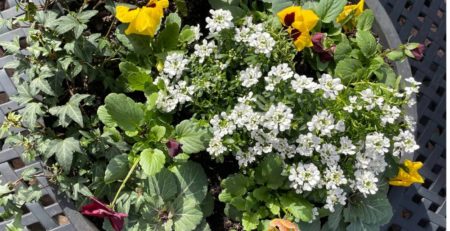How to Winterize Your Garden
Some gardeners never seem to stop, but if you are one that wants a break for the winter, there are a few essential tasks you should perform to ensure that your garden goes into spring as healthy as possible:
 Sanitize the garden. Plant debris can harbor insect pests and diseases that may carry over into next year’s crop. Because the fall has been mild, you may have some eggplants or pepper plants hanging on, but it is time to remove them and any other remnants of the summer crop. Clean out all plant residue, including foliage and any fallen fruits and vegetables that may be lying around. If you have plants that you know to have been diseased, you should dispose of these in the trash or bury them away from the garden rather than composting them, as many home compost piles do not get hot enough to kill off disease organisms. No-till gardeners often cut off the foliage of spent plants but leave the roots in the soil. The roots then decompose and provide additional organic matter for the soil. If you do choose to leave roots, consider pulling a plant or two and inspect the roots for signs of nematodes. If the roots of the plant are twisted and covered with nodules, then remove all infected plants and dispose of them in the trash. For additional information about dealing with root-knot nematodes: https://hgic.clemson.edu/factsheet/root-knot-nematodes-in-the-vegetable-garden/. When you clean out the plant material, also remove and clean any cages, stakes and other support which can also be a source of cross contamination.
Sanitize the garden. Plant debris can harbor insect pests and diseases that may carry over into next year’s crop. Because the fall has been mild, you may have some eggplants or pepper plants hanging on, but it is time to remove them and any other remnants of the summer crop. Clean out all plant residue, including foliage and any fallen fruits and vegetables that may be lying around. If you have plants that you know to have been diseased, you should dispose of these in the trash or bury them away from the garden rather than composting them, as many home compost piles do not get hot enough to kill off disease organisms. No-till gardeners often cut off the foliage of spent plants but leave the roots in the soil. The roots then decompose and provide additional organic matter for the soil. If you do choose to leave roots, consider pulling a plant or two and inspect the roots for signs of nematodes. If the roots of the plant are twisted and covered with nodules, then remove all infected plants and dispose of them in the trash. For additional information about dealing with root-knot nematodes: https://hgic.clemson.edu/factsheet/root-knot-nematodes-in-the-vegetable-garden/. When you clean out the plant material, also remove and clean any cages, stakes and other support which can also be a source of cross contamination.

Keep weeding. Weed control in and around the vegetable garden is crucial to prevent weeds going to seed and spreading throughout the garden. Many weeds serve as hosts for damaging insects or diseases which can be transmitted to next season’s planting. For example, tomato spotted wilt virus is a serious disease of tomatoes and is transmitted by the feeding of western flower thrips. Dandelions, chickweed and other perennial weeds serve as hosts for both the insect and the virus. Harlequin bugs, a pest of cabbage crops, will overwinter in weeds from the same family of plants and wait to move back into your spring garden as soon as it is ready. https://ucanr.edu/blogs/blogcore/postdetail.cfm?postnum=28940

Don’t leave bare soil. Bare soil dries out, is prone to erosion and allows weeds to sprout. Bare soil can also crust over, leading to water run-off and contributing to further drying of the soil. If you are done planting for the year, work some compost into the soil and apply a layer of organic mulch to the bed. Mulch materials can be shredded leaves, straw or compost. By covering soil, you not only protect it from the elements, but you replenish valuable organic material which contributes to overall soil health. https://extension.umn.edu/managing-soil-and-nutrients/living-soil-healthy-garden
Do a soil test. Many types of vegetables are “heavy feeders” and can deplete the soil of essential nutrients over time. A soil test can pinpoint any deficiencies or excesses, and the report will make recommendations for fertilization and soil amendments if needed. If you have not had a soil test in the last few years, now is a great time before the lab gets busy in the spring. For information about obtaining a soil testing kit from Texas A&M University’s soil testing lab, visit: https://soiltesting.tamu.edu/
Plan to rotate your crops next season. Avoid planting the same types of plants in the same place year after year; doing so allows pests and diseases to build to levels that may be difficult to control in the future. If you need help planning out a good rotation, TAMU has information that can help: https://lubbock.tamu.edu/programs/crops/vegetables/vegetable-rotations-successions-and-intercropping/
For further reading:
https://pestadvisories.usu.edu/2019/09/30/managing-pests-with-fall-garden-clean-up/
https://agrilifetoday.tamu.edu/2024/10/16/five-steps-to-prepare-your-garden-for-winter/












